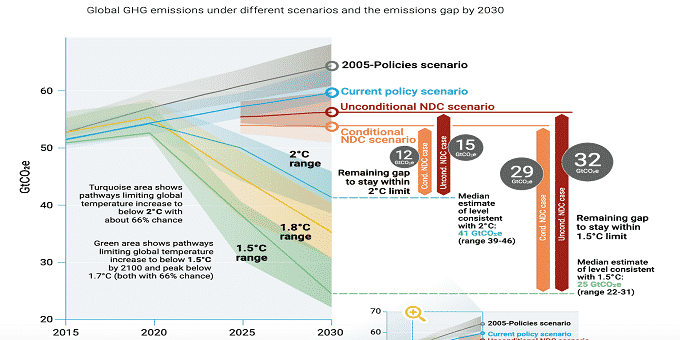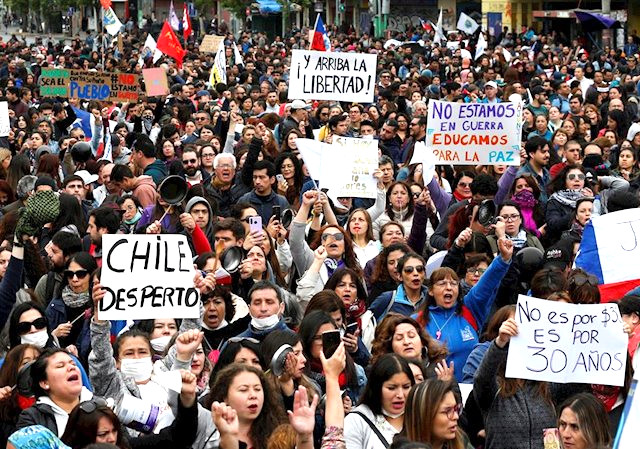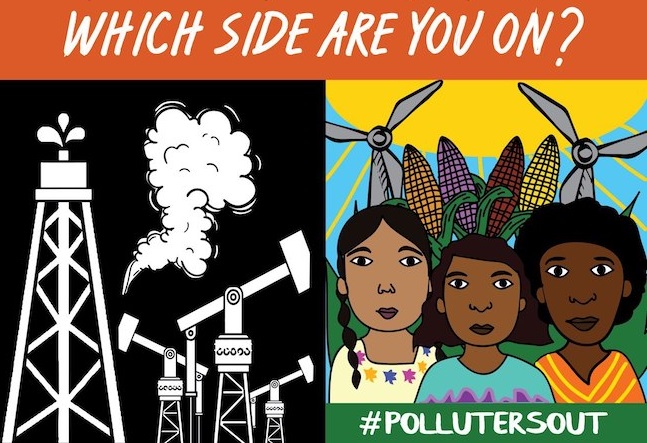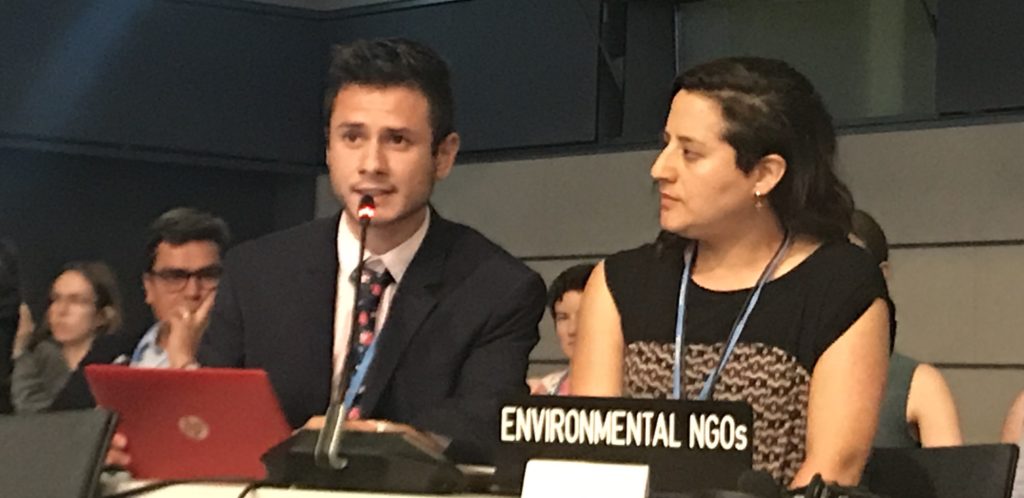Big Polluters and Northern countries are throwing gasoline on the fire of the climate crisis, knowingly paving the way for even more fossil fuels
To endorse this statement, sign on here. **Español abajo**
Before COP25 even began, it was clear that Big Polluters — including the fossil fuel, agriculture, forestry, and carbon market industries — plan to lock the world into catastrophic warming in the next few years. Intended fossil fuel expansion by 2030 is at least 50% beyond a 2C target and 120% beyond what may be compatible with the global commitment to limit heating to 1.5C. The vast majority of this expansion is projected to come from the U.S. and Canada.
Big Polluters brought their agenda straight to the halls of the U.N. at COP25. With the help of governments like the U.S., EU, Australia, Canada, and others historically most responsible for the climate crisis, these polluters are strategically advancing rather than protecting against this deadly agenda:
- They want to use carbon markets to “offset” rather than cut emissions, by commodifying nature and shifting burdens through carbon trading to the South — burdens that will be disproportionately forced onto and violate the rights of women, youth, indigenous peoples, and frontline communities.
- Polluting countries and corporations are pushing so-called “nature-based solutions,” which could be a euphemism for large scale biomass burning, carbon storage technologies, the commodification of the ocean, and carbon trading and offsets, that will displace food production and force continued deforestation.
- Seemingly innocuous language on metrics could open the door to the most dangerous geo-engineering technologies by spraying sulfur into the Earth’s atmosphere to block some sunlight from reaching the planet.
The result of all of this is that food security and the integrity of biodiverse ecosystems would simultaneously be threatened by climate change, by carbon trading projects, and by large-scale geo-engineered disruption of the planet. All this so that Big Polluters can continue digging up, burning, and profiting from fossil fuels.
These polluters know they are wreaking havoc on the planet but seek to extract as much profit as possible in the near term with the vain idea that their wealth will protect them from the impacts of planetary breakdown.
That’s why, in addition to all the above, they are seeking to avoid any liability for this deliberate destruction by attempting to expand a waiver against liability and block compensation and finance in discussions that are designed to protect the communities on the frontlines from harmful impacts: loss and damage.
If these proposals – being rammed through by polluting governments and the corporate interests they are serving – are packaged into a “deal” at the close of this COP, it will surely be a deal only for the corporate elites, while damning people and the planet. Such a deal would completely disregard best agreed science, including that presented by the IPCC. It would condemn those on the frontlines of the climate crisis, while hiding the crimes of polluters. And it would lead to increased inequality with no increase in ambition, no real emissions reductions, and no pathway to 1.5.
Experts have now assessed that the existential threat of climate change impacts surpasses that of weapons of mass destruction. We need bold, transformative and immediate action: We must prevent the proliferation of fossil fuels. We must fast track a just and peaceful transition to a safe, healthy and sustainable future for all. We must make Big Polluters pay for the damage they’ve caused.
It is not too late for governments to change the outcomes of COP25. In these final hours, it is not too late for developing countries to stand strong, to resolutely refuse the agenda of polluters. The need is clear: Advance real solutions, not carbon markets. Ensure developed countries provide funds and technology to help avert and minimize the worst impacts of climate change. Respect gender, youth and human rights, including the rights of Indigenous Peoples. And, recognizing that these polluters have known full well the harms they’ve caused, protect the right of sovereign nations to hold them liable.
From the Amazon to the Arctic, our world is on fire. Allowing expansion of coal, oil and gas production at this moment of history is throwing gasoline on the fire.
| ActionAid International |
| Aksi! Indonesia |
| Alliance for Future Generations – Fiji |
| ALTSEAN |
| Les Amis de la Terre Togo |
| Arctic Youth Sweden |
| Articulación de Movimientos Sociales de Nicaragua |
| Artivist Network |
| ASEED Europe |
| Asian Peoples’ Movement on Debt and Development |
| Asociación Cubana de las Naciones Unidas |
| Asociación Cubana de Producción Animal |
| Asociación Cubana de Técnicos Agrícolas y Forestales |
| Asociación filosófica de artes marciales songahm, Uruguay |
| Asociación Nacional de Economistas y Contadores de Cuba |
| Athens County Fracking Action Network |
| BankTrack |
| Center for Biological Diversity |
| Centre for Environmental Justice, Sri Lanka |
| Centro Ecosocial Latinoamericano |
| Centro Félix Varela |
| CIET-Uruguay |
| CLEAN (Coastal Livelihood and Environmental Action Network) |
| CLEAN Kulna Bangladesh |
| Climate Justice Edmonton |
| Climate Justice Programme |
| The Climate Reality Project América Latina |
| Climate Watch Thailand |
| CliMates |
| Coalición México Salud-Hable |
| Colectivo Pro Derechos Humanos, PRODH-Ecuador |
| Colectivo Viento Sur |
| Collectif Breakfree – Switzerland |
| Collectif Senegalais des Africaines pour la Promotion de l’Education Relative a l’Environnement (COSAPERE) |
| Comisión Nacional Permanente de Lucha Antitabáquica – COLAT |
| Consejo de Iglesias de Cuba |
| Corporate Accountability |
| Corporate Europe Observatory |
| CUBASOLAR |
| Dakota Water Walk and Ride |
| Diko Bigas Institute Nepal |
| Earth in Brackets |
| EarthWorks |
| Eco Justice Valandovo |
| Ecologistas en Acción |
| Educar Consumidores |
| Energy and Climate Policy Institute for Just Transition |
| ENLACES por la Sustentabilidad |
| Environmental Rights Action, Nigeria |
| ETC Group |
| FIC Argentina |
| FESAR-Ecuador |
| Fiji Youth Sexual and Reproductive Health and Rights Alliance (FYSA) |
| Foro de Salud Pública, Ecuador |
| Friends of the Earth England, Wales and Northern Ireland |
| Friends of the Earth Europe |
| Friends of the Earth International |
| Friends of the Earth Scotland |
| Frontera Water Protection Alliance |
| Fundación Ambiente y Recursos Naturales (Argentina) |
| Fundación Ellen Riegner de Casas |
| Fundación para Estudio e Investigación de la Mujer |
| Fundación Salud Ambiente y Desarrollo, FUNSAD, Ecuador |
| Fundeps-Argentina |
| Gastivists |
| GenderCC-Women for Climate Justice |
| The Global Campaign to Demand Climate Justice |
| Global Forest Coalition |
| Global Justice Ecology Project |
| Grassroots Global Justice Alliance |
| Green Course |
| Health of Mother Earth Foundation |
| Indian Social Action Forum |
| Indigenous Environmental Network – International |
| International Centre for Climate Change and Development |
| International Economic OrganizationWorld Distribution Federation |
| Karavali Karnataka Janabhivridhi Vedike |
| Krisoker Sor Farmers’ Voice |
| Landesa (Rural Development Institute) |
| LEDARS Bangladesh |
| March for Science |
| Mesa Colombiana de Incidencia por las Enfermedades Crónicas (MECIEC) |
| MOCICC-Peru |
| Mom Loves Taiwan Association |
| National Association of Professional Environmentalists |
| National Hawkers Federation India |
| NGO Defensoría Ambiental |
| Oil Change International |
| Organización Boricuá de Agricultura Ecológica de Puerto Rico, (CLOC – LVC, Caribe) |
| People’s Coalition on the Right to Water Indonesia (KRuHA) |
| Planète Amazone |
| Plataforma Boliviana frente al Cambio Climático |
| El Poder del Consumidor, México |
| Proyectando un Ambiente y Sociedad Verde A.C. |
| Redhawk Native American Arts Council |
| Red Uruguaya ONGs Ambientalistas |
| Redrum Motorcycle Club |
| RENATA-Costa Rica |
| Sacred Stone |
| Salud Justa Mx- México |
| Schaghticoke First Nations |
| Seeding Sovereignty |
| Semilla Warunkwa |
| SERUNI Indonesia |
| Servicios Ecuménicos para Reconciliación y Reconstrucción |
| Sierra Club BC |
| Sociedad Amigos del Viento (Uruguay) |
| Sociedad Cubana para la Promoción de las fuentes renovables de energía y respeto ambiental |
| Society of Catholic Medical Missionaries |
| Südwind |
| Sukaar welfare organization Pakistan |
| SustainUS |
| Texas Environmental Justice Advocacy Services |
| UKYCC |
| United Confederation of Taíno People |
| La Via Campesina |
| War on Want |
| What Next Forum |
| Women Engage for a Common Future |
| Women’s Earth and Climate Action Network (WECAN) |
| Women’s March Global |
| World March of Women – Switzerland |
| World Peace and Prayer Day |
| Young European Greens |
| Young Friends of the Earth Macedonia |
| Youth Volunteers for the Environment |
| 350.org |
Declaración conjunta de la sociedad civil sobre la COP25
Los grandes contaminadores y los países del norte están arrojando gasolina al fuego de la crisis climática, abriendo deliberadamente el camino para aún más combustibles fósiles.
Incluso antes de que comenzara la COP25, estaba claro que los grandes contaminadores, incluidas las industrias de combustibles fósiles, agricultura, silvicultura y mercados de carbono, planean condenar al mundo a un calentamiento catastrófico en los próximos años. Los planes de expansión de la industria de combustibles fósiles para el 2030 nos llevaría al menos a 50% por encima del objetivo de 2˚C y a 120% más de lo compatible con el compromiso global de limitar el calentamiento en 1.5˚C. Se prevé que la gran mayoría de esta expansión provenga de los EE.UU. Y Canadá.
Los grandes contaminadores trajeron su agenda directamente a los pasillos de la ONU en la COP25. Con la ayuda de gobiernos como Estados Unidos, la Unión Europea, Australia, Canadá y otros históricamente responsables de la crisis climática. Estos contaminadores en lugar de proteger, están avanzando estratégicamente esta agenda mortal :
- Quieren utilizar los mercados de carbono para “compensar” en lugar de reducir las emisiones, mediante la mercantilización de la naturaleza y através del comercio de carbono hacia el Sur, mecanismos que se traducirán en violaciones desproporcionadas de los derechos de las mujeres, los jóvenes, los pueblos indígenas y las comunidades en primera línea.
- Los países y corporaciones contaminantes están impulsando las llamadas “soluciones basadas en la naturaleza”, que puede ser un eufemismo para la quema de biomasa a gran escala, las tecnologías de almacenamiento de carbono y las compensaciones para el comercio de carbono, que competirán con la producción de alimentos y fomentarán la deforestación.
- Quieren ir aún más lejos y abrir la puerta a las peligrosas tecnologías de geoingeniería para rociar azufre en la atmósfera de la Tierra para evitar que el calor del sol llegue al planeta.
Como resultado, la seguridad de alimentos y la integridad de los ecosistemas biodiversos se verán amenazados simultáneamente por el cambio climático, por los proyectos de comercio de carbono y por la disrupción de la geoingeniería a escala planetaria. Todo esto para que los grandes contaminadores puedan continuar extrayendo, quemando y haciendo lucro de los combustibles fósiles.
Estos contaminadores saben que están causando estragos en el planeta, pero buscan extraer la mayor cantidad de ganancias posibles a corto plazo con la vana idea de que su riqueza los protegerá de los impactos del colapso planetario.
Es por eso que, además de todo lo anterior, buscan evitar cualquier responsabilidad por esta destrucción deliberada al fomentar una exención contra la responsabilidad y bloquear la idea de compensación y financiamiento en las discusiones de Daños y Perdidas, que están diseñadas para proteger a las comunidades en la primera línea de los impactos destructivos.
Si estas propuestas, producto de la captura corporativa de los gobiernos, se materializan en un “acuerdo” al finalizar esta COP, será, sin lugar a duda, un acuerdo solo para las élites corporativas, mientras que condenará a los pueblos y al planeta. Tal acuerdo ignoraría por completo las recomendaciones de la ciencia, incluida la presentada por el IPCC. Condenaría a los que están en la primera línea de la crisis climática, mientras oculta los crímenes de los contaminadores. Y conduciría a un aumento de la desigualdad y no a un aumento de la ambición climática, sin reducciones de emisiones reales y sin un camino hacia 1.5˚C.
Los expertos han aseverado que la amenaza existencial que el cambio climático representa, supera la de las armas de destrucción masiva. Necesitamos medidas audaces, transformadoras e inmediatas: debemos evitar la proliferación de los combustibles fósiles. Debemos acelerar una transición justa y pacífica hacia un futuro seguro, saludable y sostenible para todos. Debemos hacer que los grandes contaminadores paguen por el daño que han causado.
No es demasiado tarde para que los gobiernos cambien los resultados de la COP25. En estas últimas horas, no es demasiado tarde para que los países en desarrollo se mantengan firmes y rechacen decididamente la agenda de los contaminadores. La necesidad es clara: avanzar en soluciones reales, no en mercados de carbono. Asegurar que los países desarrollados proporcionen recursos financieros y tecnología para ayudar a evitar y minimizar los peores impactos del cambio climático. Respetar los derechos de género, jóvenes y humanos, incluyendo los derechos de los pueblos inígenos. Y, reconociendo que estos contaminadores conocen bien los daños que han causado, proteger el derecho soberano de las naciones a responsabilizarlos.
Desde el Amazonas hasta el Ártico, nuestro mundo está en llamas. Permitir la expansión de la producción de carbón, petróleo y gas en este momento de la historia es arrojar gasolina al fuego.


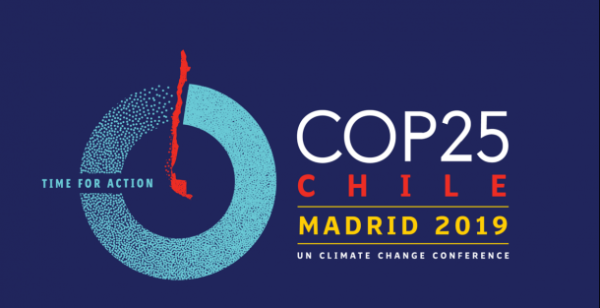
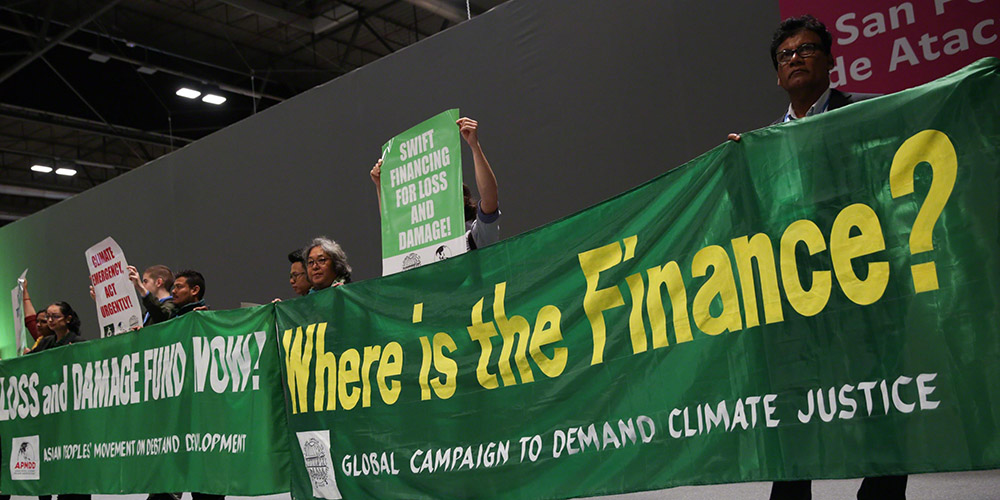








%3Ano_upscale()%2Fcdn.vox-cdn.com%2Fuploads%2Fchorus_asset%2Ffile%2F16185439%2FGettyImages_1138923863.jpg&f=1&nofb=1)

